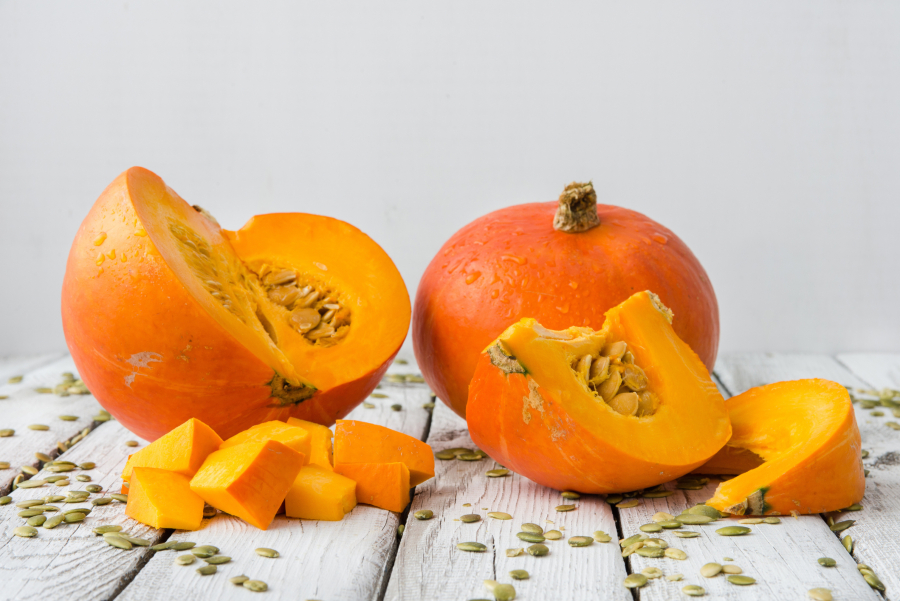Cultivation of pumpkins started in Central America, and mention of pumpkins in writings dates back hundreds of years. Native Americans roasted slices of pumpkin over open flames for eating and used dried strips of pumpkin to make mats. Pumpkin pie originated from colonists slicing off the top of a pumpkin, removing the seeds, filling with milk, spices and honey, and baking in hot ashes.
Pumpkins are rich in antioxidants, vitamins, minerals and fiber. They are loaded with beta-carotene. This plant carotenoid is converted to vitamin A in the body and promotes overall health. Eating foods rich in beta-carotene may reduce the risk of heart disease and offer protection against certain types of cancers.
In today’s American culture pumpkins are frequently used for carving jack-o’-lanterns or baked into pumpkin pie. However, the flesh, seeds and leaves are all edible. The seeds can be roasted and pressed into oil. The leaves, which must be fresh for cooking, are considered a Korean delicacy. Cubed pumpkin can be added to soups, stews and casseroles.
There are three tested and approved methods for preserving pumpkin flesh: pressure canning, freezing, and drying. Regardless of preservation method, always source the freshest and highest-quality pumpkin that you can. Preservation will not improve the end product. The pumpkin should be free of blemishes. Avoid overripe and frostbitten squash. Pumpkins should have a hard rind and stingless, mature flesh. Carving pumpkins can be used, but smaller pie-type pumpkins are easier to handle and produce a better product. It is not recommended to eat carved Halloween pumpkins. But pumpkins seeds can be set aside and roasted immediately after carving.



